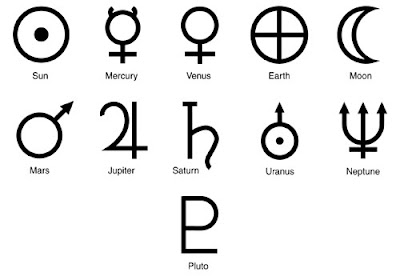The easiest way to get an accurate copy of your horoscope is to log on to the Internet, go to one of the sites in the following list, and type in the date, year, time, and place of your birth. Here are three of the best sites to visit:
Astrolabe (www.alabe.com): Astrolabe offers an excellent, free birth chart along with about three pages of interpretation. Feed your birth date into their form, send it off, and seconds later, it comes back to you, complete - and I mean complete. In contrast to other Web sites with seemingly similar offers, Astrolabe supplies not only some basic interpretation but also an image of the actual chart, with the Sun, Moon, and planets placed clearly within the zodiac wheel. Astrolabe also offers other services, for which you have to pay.
Astrodienst (www.astro.com ): You can get a free birth chart (or "portrait") at this absorbing Web site - and lots more, including lengthy daily horoscopes, a report on "love, flirtation, and sex," a relationship chart and analysis, and a six-month forecast based on the changing position - or transits (see Chapter 16) - of the planets. All these freebies are abbreviated versions of longer reports you can buy. I donít have a problem with that. The only missing ingredient here is that your actual chart - the round emblem that suggests a personal mandala - is not shown. You have to construct it yourself. (I show you how in Chapter 3.)
Chaos Astrology (www.chaosastrology.com ): The free birth chart offered at this Web site is longer than most - plus, it includes the actual chart, if you know where to look. The trick is simple: After you feed in your birth information and your astrological profile appears on the screen, click on the sun/moon icon at the top of the page. Lo and behold: Your actual birth chart appears.
Astrolabe (www.alabe.com): Astrolabe offers an excellent, free birth chart along with about three pages of interpretation. Feed your birth date into their form, send it off, and seconds later, it comes back to you, complete - and I mean complete. In contrast to other Web sites with seemingly similar offers, Astrolabe supplies not only some basic interpretation but also an image of the actual chart, with the Sun, Moon, and planets placed clearly within the zodiac wheel. Astrolabe also offers other services, for which you have to pay.
Astrodienst (www.astro.com ): You can get a free birth chart (or "portrait") at this absorbing Web site - and lots more, including lengthy daily horoscopes, a report on "love, flirtation, and sex," a relationship chart and analysis, and a six-month forecast based on the changing position - or transits (see Chapter 16) - of the planets. All these freebies are abbreviated versions of longer reports you can buy. I donít have a problem with that. The only missing ingredient here is that your actual chart - the round emblem that suggests a personal mandala - is not shown. You have to construct it yourself. (I show you how in Chapter 3.)
Chaos Astrology (www.chaosastrology.com ): The free birth chart offered at this Web site is longer than most - plus, it includes the actual chart, if you know where to look. The trick is simple: After you feed in your birth information and your astrological profile appears on the screen, click on the sun/moon icon at the top of the page. Lo and behold: Your actual birth chart appears.

